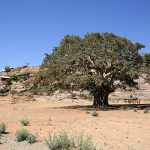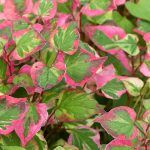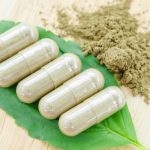
Leaves of this Egyptian plant could be the next big thing in alternative medicine, according to this study
Wednesday, September 05, 2018 by Edsel Cook
http://www.naturalnewsherbs.com/2018-09-05-leaves-of-this-egyptian-plant-could-be-the-next-big-thing-in-alternative-medicine.html

An Italian study gave top marks to the leaves of the warka (Ficus vasta), a species of fig tree found in Egypt. Long used as an ethnomedicine for all kinds of illnesses, the leaves are reported to contain plenty of phenolics with strong antioxidant activity.
Natural sources of these antioxidants are growing more important as healthier alternatives to potentially dangerous synthetic equivalents. It so happens that many medicinal plants contain chemical compounds that possess the desired ability to scavenge free radicals.
Furthermore, the overuse of commercial antimicrobial drugs has caused many harmful microorganisms to develop resistance to multiple drugs. To counteract the multi-drug resistance of infectious pathogens, new antimicrobial treatments are being developed from alternative sources such as medicinal plants.
Plant-based phytochemicals offer potent and safe ways to combat disease-causing bacteria, be it by themselves or when administered alongside antibiotics. Polyphenols are especially promising when it comes to taking out infections that would otherwise resist treatment.
Several fig tree species are used in folk medicine to treat different kinds of maladies. Some of them can even alleviate tuberculosis and other infectious diseases.
One such fig tree is the warka, which is found in northern and eastern Africa. Its bark and leaves are traditionally burned to make a poultice that cures tumors, while the leaves themselves can alleviate pain, treat rheumatism, and purge intestinal worms. (Related: Antibiotic resistance to become world’s number one killer by 2050, claims expert.)
Extract of warka leaves suppresses microbial growth
Researchers from the University of Messina (UoM) chose to investigate the warka as it had not been widely studied like other species of fig trees. They created a hydroalcoholic extract from warka leaves, which they then investigated for its phenolic content and effectiveness against microbes and oxidants.
They reported finding both flavonoids and phenolic acids in the extract. Both classes are common plant phenolics. The latter phytochemicals possessed significant antioxidant properties by scavenging free radicals, serving as reducing agents, or chelating toxic metals.
The UoM researchers used three different antioxidant tests on the warka leaf extract. The assays confirmed that the extract possessed strong activity and was even better at scavenging the DPPH free radical than vitamin E, which is an excellent antioxidant.
In the antioxidant efficacy test, the extract was able to protect Escheria coli bacteria from hydrogen peroxide (H2O2), a chemical that causes oxidative stress in the bacteria. As it provided complete protection to E. coli, warka extract demonstrated significant antioxidant properties, which were attributed to its polyphenols.
The lethality bioassay involved large doses of the extract being tested on the larvae of brine shrimp (Artemia salina). The tiny invertebrates showed no ill effects from the treatment, which cleared the warka extract as non-toxic.
Finally, the antimicrobial tests determined that the extract was able to prevent the reproduction of almost all Gram-positive and Gram-negative bacteria it was tested on. The extract was especially effective against Staphylococcus aureus – which causes staph infections – and the related skin-borne Staphylococcus epidermis.
Flavonoids and phenolic acids found in the extract are known to be effective against numerous microorganisms. Gallic acid, in particular, was demonstrated to exhibit greater effectiveness than conventional antibiotics like streptomycin, being able to prevent the growth of different bacteria.
Based on their findings, the UoM researchers concluded that warka extract exhibited significant antioxidant and antibacterial efficacy. It also did not display any toxic effects on brine shrimp larvae. Taken together, these conclusions suggest that the leaves of this Egyptian fig tree could serve as an alternative treatment for infections.
Get more articles about natural means of treating infections and other diseases at NaturalCures.news.
Sources include:
PHCogCommn.org [PDF]





